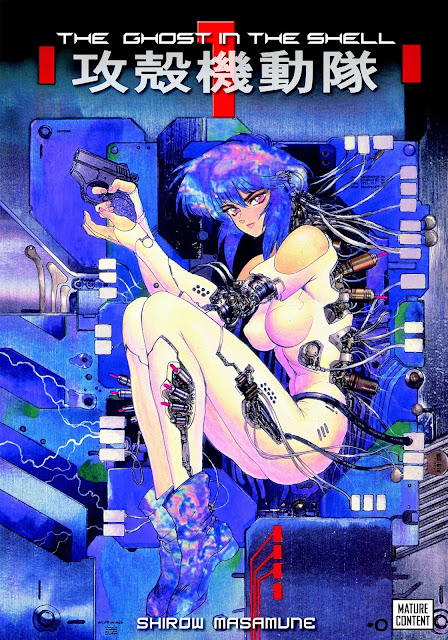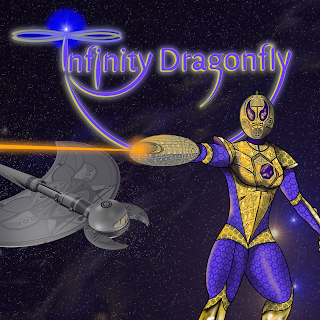Retrospective: Ghost In The Shell
Japan, 2030: Major Motoko Kusanagi is a cyborg: a human brain and spinal cord encased in a synthetic body that gives her superhuman strength and capabilities. It's also a a very aesthetically pleasing model (this being manga cyberpunk): tall, trim, athletic with improbably pert breasts and a cherubic face. Don't be fooled by her angelic proportions, however: she is a ruthless law enforcer. It's a good job she's one of the good guys ... or is she?
Ghost In The Shell by writer/artist Shirow Masamune (debuting in 1989) is all about blurred boundaries: human/machine, truth/illusion, law/disorder... Kusanagi works for an anti-cyber-terrorist division, her team operating within large robotic suits (Fuchikomas) that resemble giant fleas and which are also sapient.Their targets are "ghost hackers" (who use virus tech to turn robots and cyborgs into killers), rogue droids and the traffickers who exploit the vulnerable to use them as raw biological material.
She and her team are something of a bunch of mavericks, never hesitating to take huge risks in pursuit of the quarry, so this is a high-tech, action-packed offering. The pace barely lets up, so the reader has to be just as switched-on as the cybercops in order to keep up: there is precious little clumsy expurgation here. Some may find that hard-going, others will appreciate being treated as being on the same page intellectually as the author, which is certainly refreshing.
It's a beautiful combination of physical action and high-brow content: one minute an agent is ripping out the spine of a violent droid, the next they are questioning the nature of their own identity. How many pieces of a person can you take out and replace and still call her the same individual? What percentage of a cyborg has to be flesh to still qualify her as a human being?
And also: Does it matter? The fully mechanical Fuchikomas are also fully self-aware and begin to demand recognition as such. If a machine can be regarded as the equal of a person, why should it matter if 90% of your body was designed in a state-of-the-art laboratory? Especially if it performs - and, oh baby, looks - SO much better than the original model that Mother Nature dished out?
The ambiguity doesn't stop at cybernetic existentialism; this is a dystopia where corruption in high places muddies the waters in which our heroes strive to serve and protect. It all adds up to an arena in which every battle is fought on shifting sand...
The artwork here is classic manga style; freely expressionistic but with a love for fine techy detail and a surreal edge. The designs of the weapons and the Fuchikoma are outstanding. Dense cityscapes dissolve into hallucinatory virtual vistas; fluid transitions of the imagination.
But when Kusanagi tracks down a notorious ghost-hacker known as the Puppeteer she finds these dreamworlds turn into nightmare realms where reality, consciousness, the nature of the soul ("ghost") itself is thrown into confusion.
For many readers, Ghost In The Shell is the cyberpunk manga standard. Its themes and elements are as fresh and relevant today as ever. With current advances in artificial intelligence, quantum computing and prosthetic limbs and sense organs, it might even be prophetic...
Are you ready for an upgrade?
Ghost In The Shell on Amazon
Zak Webber
Zak Webber
Twitter - @sfcomicartist / Instagram - @sfcomicartist
JOIN US ON FACEBOOK! - SCI-FI COMIC NEXUS
*****
***
*




Comments
Post a Comment